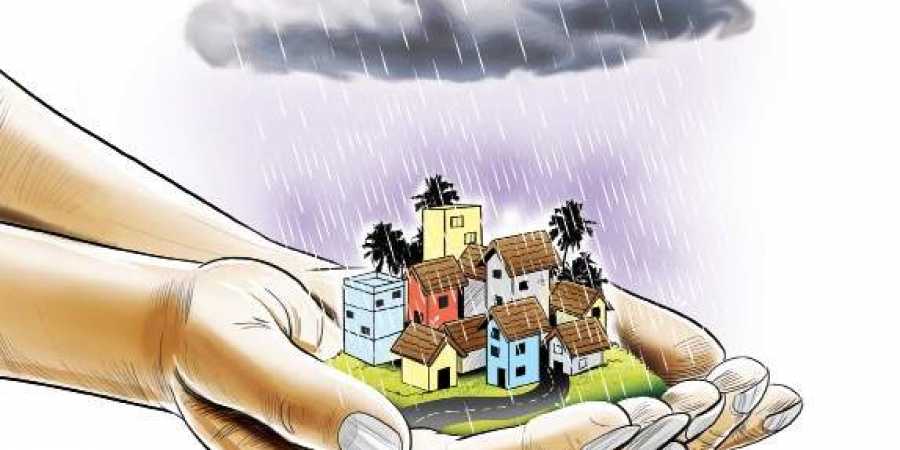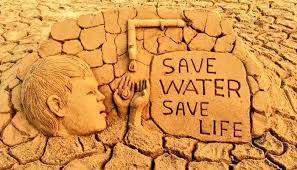The ever-increasing population, urbanization, industrialization and rise in agricultural activity are major reasons for growing water demand. Rapid decline in the water table can be attributed to over exploitation of ground water resources for meeting these demands.
The basic purpose of artificial recharge of groundwater is to replenish water into aquifers that have depleted due to excessive groundwater extraction. Artificial groundwater replenishment systems involve techniques that modify the natural movement of surface water and use civil construction methods to enhance the sustainable yield of groundwater in areas where over extraction has depleted underground aquifers.
SILVERON’s dedicated team led by Sunil Sharma started experimentation to determine the various factors affecting groundwater conditions such as thickness of alluvium, depth to rock, the extent and depth of aquifer and quality of ground water. The team conducted several Geophysical Vertical Electrical Soundings in the targeted areas.
In our earlier blog Geophysical Survey: An essential tool for Rainwater Harvesting, we discussed the importance of variations in soil formation and presented sample data from our records showing major variations in ground strata.
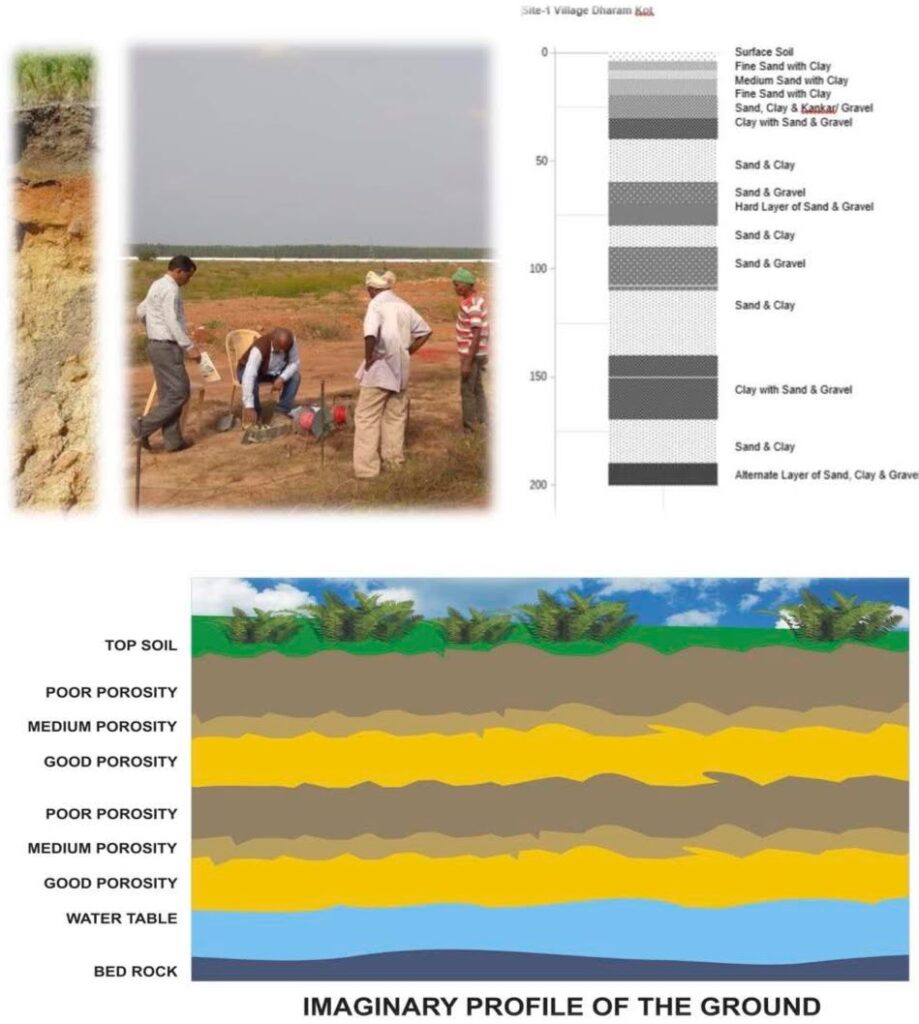
Geophysical measurements are based on the fact that subsurface consists of a sequence of distinct layers of finite thickness. Each layer is assumed to be electrically homogeneous and isotropic and the boundary planes between layers are assumed to be horizontal.
Lessons from Field Experiments
Based on the Geophysical Survey and analysis of soil samples obtained from various depths while drilling trial bores using a Rotary drilling machine, it was observed that the changing compositions of soil components are very diverse. The soil strata keeps changing as we drill deeper into the earth and we are likely to encounter some layers that absorb more water, some which absorb less and some which absorb no water.
Since it is impossible to modify this naturally occurring soil strata, hence the research team came to the conclusion that for rain harvesting, Diameter of the recharge bore has less meaning while its depth is more important.
Team SILVERON also studied existing rainwater harvesting designs and observed that most structures had worked well in the initial months but gradually their efficiency reduced, and water started stagnating in the structures. This happened as most existing structure designs were not in line with natural laws but rather attempted forcing water absorption against natural processes.
The conclusion drawn was that for rain harvesting, supporting natural process is a sure path to success while going against nature is a recipe for failure.
In view of the above valuable lessons, Sunil Sharma and his team started experimenting with multiple design ideas to be able to develop an Eco-friendly shaft design which would recharge the ground water in a sustainable way closest to the natural recharge process.
The Vision
SILVERON’s dream was to create a Rainwater Harvesting System that recharges ground water aquifers and simultaneously enriches the root zone with moisture supporting trees, shrubs and foliage. The vegetation generated by this enriched root zone forms a network of roots, binding the soil together to check soil erosion and provide fodder for animals.
Increased moisture content in the top soil and vegetation raises the humidity in the air that in turn helps in the survival of diverse interdependent friendly organisms like bacteria and earthworm etc living both over and below the soil surface.
The conceived design would allow water to flow down an unlined borehole in direct contact with soil starting from the root zone. This matches the natural process where the rainwater is not flowing through artificial ducts such as a failure-prone slotted pipe system .
An Ingenious Design
We had determined that the soil profile is not uniform and there are layers of varying composition, porosity & permeability. It is conceivable that in the natural process, rain water on the surface would runoff since it was the easiest path and droplets which percolated into the ground due to gravity encounter other obstacles in the flow that may delay movement and point of contact with groundwater.
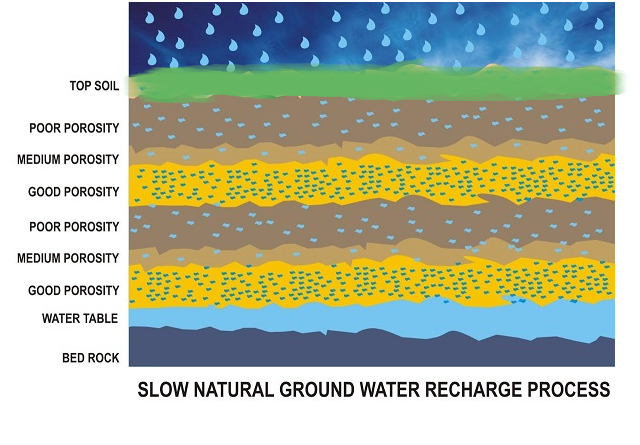
To facilitate both vertical and horizontal flow of water across the varying permeability of soil strata, SILVERON shaft depth was planned in a way that pierces through all layers and provides easy passage for the flow of water. The shaft’s bore hole is filled with material of high permeability providing an automatic connection between all layers in the ground.
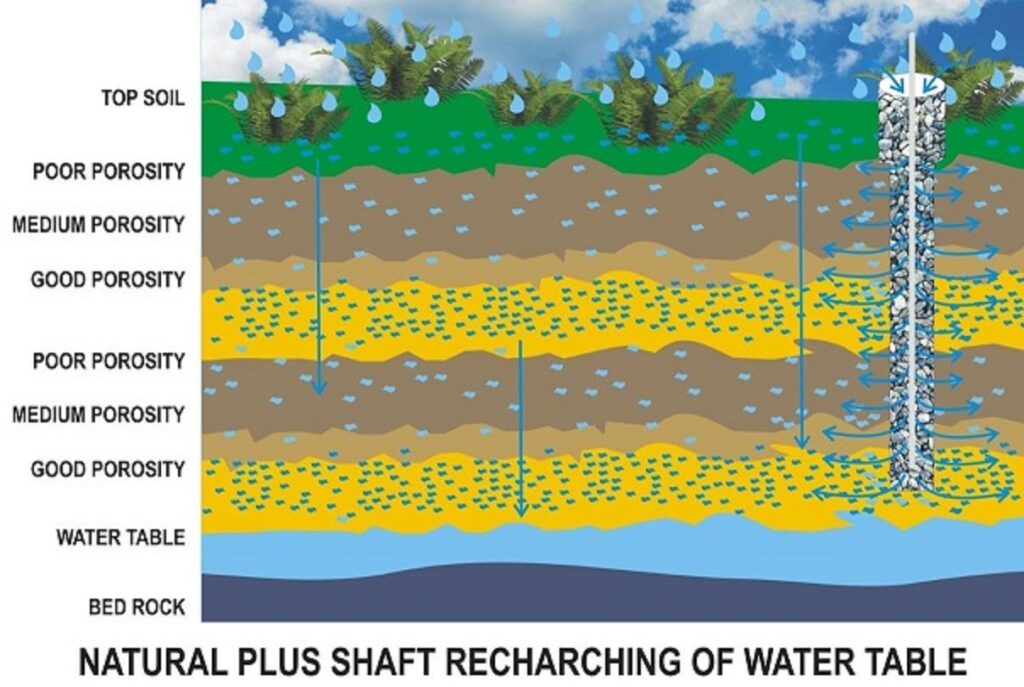
It was observed that the recharge shaft had its own absorption (or intake) speed and any excess quantity of water reaching it would tend to runoff on the ground surface.
Encouraged by the success of recharge due to the vertical inter-connectivity that the shaft provided through natural formations inside the ground, it was decided to interconnect the adjoining recharge shafts by PVC pipe at the top so that the excess water entering the shaft could reach an adjoining recharge shaft without evaporation losses. This would help in avoiding flood hazard during storm showers by capturing the rainfall run-off which would otherwise overwhelm sewer or storm drains and also results in soil erosion.

The team while examining choked recharge structures observed that most rain water harvesters focused entirely on silt removal before the water was allowed to enter the recharge structure. SILVERON recognizes that silt is the finest particles of soil, suspension of silt in flowing rain water is natural and since the turbulence is high during monsoon season, silt does not get time to settle making the water appear murky.
The challenge is not only to ensure unhindered recharge performance in condition of normal silt naturally flowing into the structure but also to incorporate design features that would make silt removal and cleaning an easy & cost effective process.
SILVERON designed recharge shafts such that the silt which enters the shaft in the previous monsoon is removed easily by back wash arrangement before onset of next monsoon, at almost negligible cost and as simple process.
SILVERON shaft was designed conceived that rain water transported from roof tops, paved surfaces or low-lying areas to the recharge shaft would percolate and make the soil wet all around the entire depth of the borehole.
This in turn would attract naturally percolating rainwater coming from any direction, any distance and at any depth – since the shaft column is available to provide easy downward flow passage. The main design principle was to let nature develop an inter-connected network of streams below ground howsoever minute, since once created these channels would remain available as a path for water to flow when it rains.
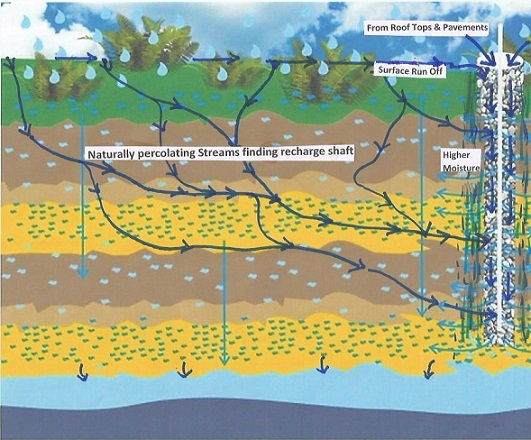
The SILVERON Edge
We at SILVERON, understand the importance of considering all natural factors when designing a rainwater harvesting structure. These variations make the scope of work differ from location to location. Site specific work of such magnitude calls for years of experience and understanding on the part of the harvester.
Ingenuity, untiring efforts, trials, determination to succeed and decades of experience stand behind the performance of SILVERON Rainwater Harvesting Systems.
The wide acceptance and appreciation of the performance of SILVERON recharge shafts makes SILVERON the first choice in the field of water conservation.


